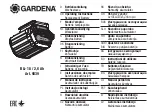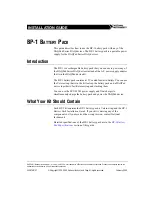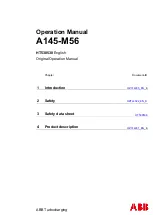
Troubleshooting Guide
Page 8
Ultra-Power II, Accu-Power, and Accu-Power Onboard Battery Chargers
1. CHARGER DOES NOT TURN ON
Stationary Models
Always disconnect the AC power supply first.
Disconnect and visually inspect the DC output plug and battery receptacle to be sure they are in good working
condition.
The DC plug must be disconnected and reconnected to start the charger after it has been turned off.
If the DC plug and receptacle are in good condition, connect the DC plug to the receptacle.
Connect the power supply cord to a live AC outlet and listen for the power relay inside the charger to “click” on
within five seconds. If the click cannot be heard, disconnect the AC power supply cord and remove the DC
plug from the receptacle. Connect the AC power supply cord of another charger known to be operating prop-
erly, to a live AC outlet. Connect the DC plug of this second charger to the vehicle receptacle.
If still no click can be heard, a malfunction in the batteries or receptacle wiring exists. If the click can be heard,
the batteries and receptacle are good and a malfunction exists in the original charger.
If the relay click can be heard from the original charger, a hum from the transformer should also be heard. If
transformer hum cannot be heard, check to be sure the AC power supply cord is securely connected to a live
AC outlet. Check the AC line fuse or circuit breaker and connect some other electrical appliance to the outlet
to verify the presence of AC power. If AC power is present and still no transformer hum can be heard, the
charger is malfunctioning. If the relay clicks on and the transformer hums, but no charge rate is indicated on
Accu-Power models, or the CHARGER ON light doesn't light up on Ultra-Power II models, the charger is mal-
functioning.
Onboard Models
Connect the power supply cord to a live AC outlet and listen for the power relay inside the charger to “click” on
shortly. If the click cannot be heard, remove the AC plug from the outlet. Connect the AC power supply cord
of a stationary charger known to be operating properly, to a live AC outlet. Connect the DC output plug of the
stationary charger to the vehicle receptacle.
If still no click can be heard, a malfunction in the batteries or receptacle wiring exists. If the click can be heard,
the batteries and receptacle are good, and a malfunction exists in the original charger and/or retractable cord
reel.
If the relay click was heard from the original (onboard) charger with its power supply cord connected to a live
AC outlet, a hum from the transformer should be heard and the ammeter should indicate the charge rate. If no
transformer hum can be heard, check to be sure the AC power supply cord is securely connected to the live
AC outlet. Check the AC line fuse or circuit breaker and, if possible, connect an electrical appliance to the out-
let to verify the presence of AC power. If AC power is present and still no transformer hum can be heard, the
charger and/or retractable cord reel are malfunctioning. If the relay clicks and the transformer hums, but no
charge is indicated on the ammeter, the charger is malfunctioning.
2. CHARGER FUSE BLOWS
The charger fuse assembly consists of a U shaped two-stage fuse wire visible through a transparent cover
mounted on the back of the front panel. Each half of the fuse wire serves as an individual fuse link that pro-
tects the charger in the event one or both rectifier diodes fail, or a reverse polarity connection is made to the
batteries.
Check the fuse assembly visually for an open or blown fuse link. If a battery has been replaced, maintenance
performed on the receptacle, or the battery wiring changed, the polarity of the batteries may be reversed. If
battery polarity is correct, then the charger is malfunctioning. If only half of the fuse link blows, the charge rate
will be low and will be indicated by a low charging current on the ammeter or by a lesser number of illuminated
lights on the front panel. The low charge rate indicates a malfunction in the charger.






























